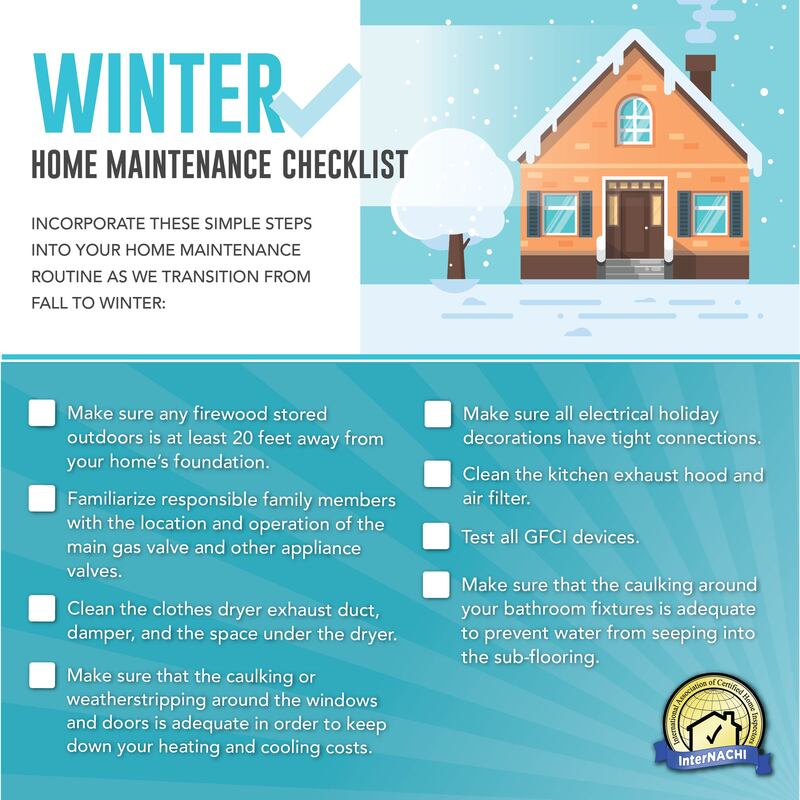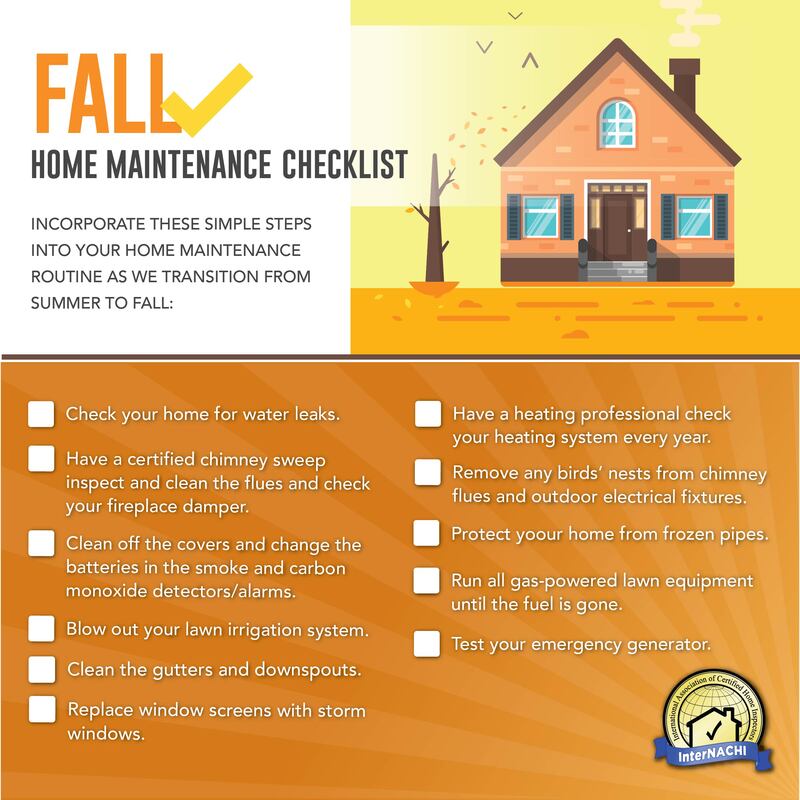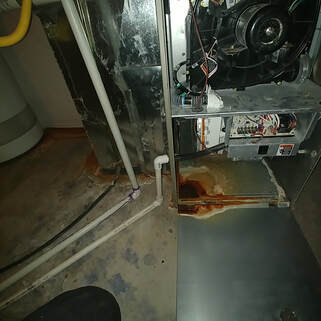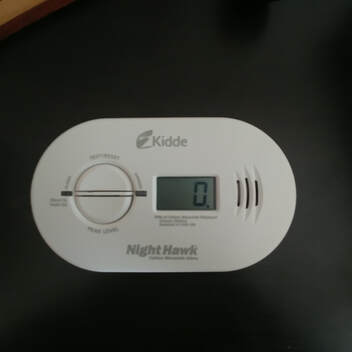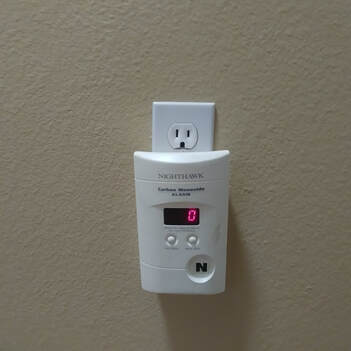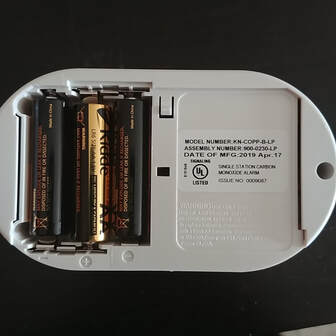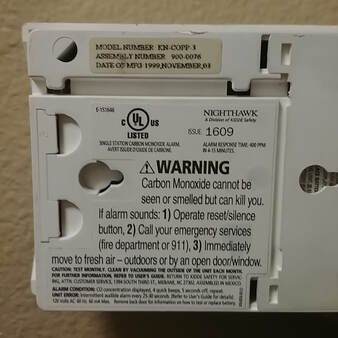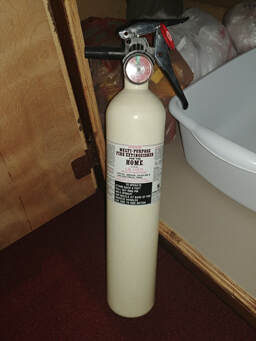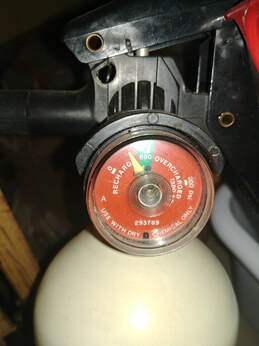The first snowfall of the year means winter is on the way. What should you look at in your home?10/31/2023
1. Your home has a leaking pipe
Whether it’s a small drip or a larger steady leak, the continuous moisture build-up can lead to mold growth, cracks in your drywall, damage to your ceilings, and can even affect your home’s foundation. If you suspect you have some plumbing that may be leaking inside your home, call a professional plumber to come and examine the signs you’re seeing, and any other plumbing questions you may have, so you can get your home back to working order. Signs to look out for: You receive an unusually high water bill, a room smells musty, or you recently noticed an unexplained staining, wet spots, mold or mildew, on ceilings, walls, or floors. 2. Your roof is leaking Rain may be a blessing for your garden, but not if it’s entering your attic or the rest of your home. Your attic is usually warmer and more humid than the central area of the house, and even a small leak from the roof into warm attic conditions makes a hotbed for mold to grow. Not to mention, if that leak continues unchecked it will begin to wreak havoc on the rest of your home, damaging ceilings and possibly your home’s walls and floors. This is one home maintenance item you will want to address the moment you realize it’s there. Signs to look out for: A large water stain appears on your ceiling, unexplained moisture or drips forming on your walls, or you see larger bits of roof shingles in the downspout of your gutters. 3. Leaky foundation Your basement foundation can leak over time. As your home settles, hairline foundation cracks can form. Unfortunately, water only needs a tiny space to seep through a foundation wall. You may be able to find and seal these cracks yourself, or you might need to hire a foundation specialist to shore up the foundation and prevent further movement and possible leaks. Standing water in an already damp basement can lead to mold growth, but also significant damage to your home. Signs to look out for: An unusually high water bill, damp carpet or floors, you can smell mold or mildew, there’s a warm spot on your floor, you spot foundation cracks, or you notice a white powdery substance (efflorescence) which is usually the result of water evaporating leaving behind minerals. 4. Damp or wet crawl space You want to keep your home’s crawl space as dry as possible. However, if you live in an area like Portland, OR or Seattle, WA where it rains a lot, it’s possible for your crawl space to become wet. It is usually because surface water from your roof’s drainage has begun overflowing, groundwater from the earth surrounding your home was overly saturated from heavy rainfall or melting snow and has found its way in, or there’s a plumbing issue you haven’t discovered yet. Though this home maintenance task isn’t necessarily the most enjoyable, because you’ll most likely be crawling under your home, it is a very important one to check off. Luckily, there are professional crawl space inspectors that can do this for you. Signs to look out for: Higher energy bills because it takes more energy to heat/cool damp air, you smell mold or mildew, or you’ve noticed an increase in dust mites and other pests that thrive in a damp environment. 5. Dirty and improperly sealed air ducts Air ducts become traps for dust, pet hair, and other contaminants that get sucked into your heating and cooling system. These contaminants stick to any damp ducting where mold, bacteria, and other fungi can grow. While you can keep air moving with ceiling or portable fans and air conditioning, the result is recirculating that same air filled with dust, mold, mildew, pet dander, and other respiratory irritants back through your home. Also, air ducts that are not sealed properly lead to overall poor air quality in your home. Replace your air filters more frequently and have a professional come out once a year to thoroughly clean out your air ducts, check your ductwork to tape and repair as needed. Signs to look out for: You begin to have high electric bills, your home is always dusty, your rooms are different temperatures, there’s debris under your vent covers, your return air register is covered in especially thick dust, and your air filter is clogged with dust. 6. Air leaks Air leaks from outside can contribute to poor quality air indoors. Especially during the warmer months, pollen from new plants, chemicals from lawn pesticides, and other environmental pollutants can float into your home through improperly sealed windows, doors, and ducting. Air leaks also contribute to higher energy bills for cooling and warming your home. If you suspect your home has air leaks and you see some of the signs listed below, then consider hiring a professional to come out and do a home energy audit. Signs to look out for: Gaps where two different building materials meet on your home (example: exterior brick joining to a cement foundation), you notice cracks/gaps by outlets, doors, window frames, fireplaces, light fixtures, or you may just simply notice a draft in your home. It is most likely coming from an air leak. 7. Sewage backup or odors from sewer gas A sewage backup is a serious environmental hazard. Because modern sewer systems usually function so effectively, people often don’t worry about how a backup might affect their home or their family. If you notice any of the signs that you have a sewage backup in your home, you should probably leave this one to the professionals and get this looked at immediately. This is one home maintenance item you don’t want to put off as the toxic fumes from sewer gas can negatively impact your family’s health. Signs to look out for: More than one of your drains are clogged, water is backing up in other drains, you see bubbles after you flush the toilet, your toilet isn’t flushing right and the plunger doesn’t seem to help, or you smell sewer gas in your home. 8. Excess moisture in the house Environmental health experts stress how important it is to maintain indoor humidity at around 40% and keep windows, basements, and attics dry. Excess moisture in your home can create a breeding ground for all types of fungi and bacteria. Monitor the humidity levels of your home with a handy humidity meter you can get at any home improvement store. This can help you decide how to control the humidity levels in your home. Signs to look out for: There’s condensation on windows during the colder months, you notice a mildew smell in the bathroom or mold growing in the cabinet under the sink, the paint is peeling, cracking, or blistering on interior surfaces, or you notice an increase in pests like dust mites. 9. Your stove’s exhaust fan is not venting properly Your stove’s exhaust fan filter collects smoke, odors, and grease from your food as it cooks. If oil clogs your filter – which it inevitably does over time – cooking contaminants recirculate back into the air in the house and begin sticking to your walls. Luckily, this home maintenance item is easily remedied by simply cleaning (degreasing) your filters. If that doesn’t work, then you may have to call in a professional because the motor in your range’s vent hood may need to be replaced. Signs to look out for: Your range hood doesn’t clear smoke easily (even on the highest setting), the exhaust fan is very loud or humming constantly, lights stop working on the hood which could indicate other electrical issues. 10. Overflowing gutters If your gutters are overflowing, it usually means they are clogged with debris – leaves, seeds, and sticks from surrounding trees. The force of water flowing through the gutters compacts this debris which leads to clogged and overflowing gutters. If you ignore this typical fall and spring home maintenance task, then your clogged gutters can cause damage to the exterior of your home. Your gutters can place unneeded strain on your roof and shingles, spill water down the side of your home instead of through the downspout and away from your home, or they can even collapse damaging the side of your house. Luckily, this is an affordable home maintenance task you can simply have a professional do for you. Signs to look out for: You see plants growing from your gutters, there’s debris on the side of your gutter, you notice dirty streaks (tiger stripping), watermarks, or mold on the side of your house, or possibly your gutter is pulling away from your home. 11. Chimney and flue build-up (creosote) Creosote is an oily substance that builds up inside your chimney and flue if you have a wood-burning fireplace or stove. Have your chimney and flue cleaned of creosote annually, especially if you regularly use your fireplace. It’s also a good idea to have it cleaned before the colder months of miscellaneous debris or even bird nests before you begin using it. If you don’t, you could put your home in danger of a chimney fire, causing significant damage to your home and possibly putting your family at risk. Hiring a professional to clean your chimney and flue once a year will help maintain your home and make sure you’re able to enjoy those warm fires for years to come. Signs to look out for: You see more wood than ash after a fire, there’s reduced drafting in the fireplace, you notice black soot around the fireplace, very dark, dense smoke comes out of your chimney, and you can see a build-up of soot, you hear a loud crackling or popping sound, or you notice an intense hot smell. PRO-TIP - If you see an issue, it will not get better with time. The cause needs to be addressed to preserve your family's health and your investment. If you don't know where to start, give me a call, we can come up with a plan. Source: https://www.redfin.com/blog/home-maintenance-11-things-you-should-address-immediately/ On a recent inspection on a Townhome built in 2015 I found these two little gems. The attic access was sealed and was probably that way from the time the home was built. I asked the seller if I could cut the caulking and enter the attic and they said ok. When I entered the attic I was expecting some heat, they are always hot, but this was hotter than usual. When I started looking around, I saw that the furnace exhaust was not attached to the chimney and was venting into the attic. It was releasing exhaust gas into the attic. That is never good. I am very thankful that no one was hurt.
I also saw that the dryer vent was not secured and dryer lint was blowing into the attic. This was releasing an incredible amount of heat, flammable material and moisture into the attic. PRO-TIP - The moral of the story is just because it is a brand new build, does not mean that it should not be inspected. Things get missed with the best intentions. It pays to have someone take a second look. Pro-Tip - A dry home is a happy home. Consider where the water from the downspouts is going to flow and make sure it flows away from the home.
Pro-Tip - If you clean your bathroom fans it will help keep the vent clear and help prevent the potential for a fire.
Pro-Tip - As part of your monthly home check, remember to check your smoke alarm, CO alarm, and Fire Extinguisher. Consider practicing the "When in doubt change it out" philosophy and take steps to ensure your family and home are safe.
At a recent inspection I came across this dryer vent that was packed with lint. This is a functional concern as well as a safety concern. As the vent is blocked the dryer has to work twice as hard to dry close and may require multiple cycles as there is no place for the moist air to go. Lint is also very flammable so this is a fire concern as well.
Pro-Tip - Dryer vents should be leaned at least annually to help the system vent and running effectively as well as mitigate fire concerns. Pro-Tip - One very cold winter I woke up to a very cold house. I had not had my furnace checked and the issue turned out to be a very easy fix that would have been caught during an HVAC service. The service fee would have been a small price to pay to of not had the hassle of no heat. As the saying goes, a ounce of prevention.....
What does your roof look like? On a recent home inspection in Colorado Springs, I came across this roof that had significant hail damage. The home was a rental and the tenants were gone during the hail storm so they did not know that the damage had occurred. Your roof has you covered. Your roof covering is the first line of defense in preventing moisture from penetrating your home. Its main job is to shed water to the gutters and downspouts where it can be moved away from your home to prevent foundation issues. Inspect it. No roof system is water proof but the roof coverings do need to be in good condition to work correctly so it is imperative that you inspect your roof or have it inspected to ensure your home and bank account does not suffer from water damage. Pro-Tip - If you are uncomfortable inspecting it or are not sure what to look for, I recommend contacting a professional roofing company to take a look. Just like your car needs maintenance so does your roof. On a recent inspection by Mountain View Home Inspections LLC in Colorado Springs, I came across this great way to test a sump pump. I recommend testing the sump pump once a month to ensure that it is operating correctly and can get water away from the home during periods of high moisture levels in the soil around your home.
A dry home is a happy home:
With all the rain we have been receiving lately it is no surprise that the ground in our yards are wet. It may be a surprise that the dirt against and underneath your foundation may be wet. *Watch the Video Above* Where is it coming from: In the video above I was performing a home inspection in Colorado Springs and had noticed that the down spouts were not moving water away from the home and the landscaping was not sloped away from the home. It was not really a surprise that the crawlspace floor was wet, but the amount of moisture sure was. There was standing water in one corner, rusted columns, and evidence that this had been going on for a while. They called a plumber: The sellers had actually paid a plumber to come out and see where the leak was coming from that made the crawlspace floor wet. It had not occurred to them that the water draining from the roof was the major cause. Keep it slopped and keep them down: When doing any landscaping, make sure the land slopes away from the home and make sure your down spouts move water away from the home. Pro-Tip - Keep water away from everything inside and out of your home. Think about how it flows away from your home and keep it dry. Doing so will save a lot of headaches and keep your hard earned money from washing away. Other things to do:
As the days get longer and warmer, we are all spending more time outdoors gardening, mending our lawns, or seeing what our beautiful state has to offer. With so many more things to do we forget that our homes can use a review to ensure they have held up during the winter. Performing your own home inspection and four areas to check: When I am doing home inspections in Colorado Springs, I generally will start with the exterior, then the roof, then the interior. This serves a few purposes. First, I am already on the ground and I want to see what the water coming off of the roof is doing to the exterior and then if water has entered the interior.
Wishful Thinking
On a recent home inspection on a very nice home in the Colorado Springs, I was inspecting the HVAC system. I had noted that the outside air conditioning unit was only a few months old and had anticipate the rest of the system to be taken care of as well. What is that? When I entered the utility room I immediately noticed rust colored deposits around the furnace, floor, and water heater. When I opened up the inspection panel on the furnace I saw more deposits and indications of past leaks. Where does it come from? When a home has air conditioning and a humidifier, a water leak or condensation can come from a multitude of sources. The humidifier can develop deposits and cease to function correctly. Condensation can form on the coil, then freeze and thaw. Condensation lines can become clogged and fail to drain correctly. Why they need to be serviced by a professional As you can see from the above pictures the leak had damaged the furnace, the duct work, the floor, and the base of the water heater. This was not a new leak. It had been an issue for quite a while. If the HVAC system had been serviced by a certified HVAC contractor annually the problem could have been caught and corrected prior to causing such damage. Pro-Tip - Inspecting and servicing your heating and cooling system once a month and having it serviced by a certified HVAC contractor annually will save you money in the long run and ensure that you and your family are enjoying the benefits of modern heating and cooling systems. Where are they?
Part of the home inspection process is to check for the presence and function of carbon monoxide alarms. When I find an alarm that does not function as intended or is missing, a discussion often takes place. It often goes like this: "Why are on the ceiling, aren't they supposed to be at the floor level? That's why they plug them into outlets." "CO is heavier than air so that is why they put them close to the floor." Or, "One in a house is fine, it circulates with the air so that is all that is needed." At an outlet.....on the ceiling......where does it go? Carbon monoxide alarms used to only be found near the floor. It is often assumed that CO is heavier than air so it settles near the floor. It is true that carbon monoxide alarms used to commonly be found near the floor, but that is also where electrical outlets are found, so for convenience CO alarms were mounted there as well. As technologies advance we often find them on the ceiling or on the wall as well as the floor. How many do I need? Colorado law requires homeowners and owners of rental property to install carbon monoxide alarms near the bedrooms (or other room lawfully used for sleeping purposes) in every home that is heated with fossil fuel, has a fuel-fired appliance, has a fireplace, or has an attached garage. I recommend one on each floor. Alarms are relatively cheap and my family's safety is worth the price of admission. Only one life to live. When researching this article I did not find any reference to any CO alarm having a life span longer than 10 years. Kidde provides a nice reference for end of life warnings at the website below. I like to follow the mantra "When it doubt change it out." https://www.kidde.com/home-safety/en/us/support/help-center/browse-articles/articles/what_are_the_end_of_life_warnings_on_a_carbon_monoxide_alarm_.html Follow the manufactures recommendations. When considering purchase or placement of a Carbon Monoxide alarm, I recommend ensuring they are Underwriters Laboratory Listed (UL Listed) and are not at the end of their life. This will tell you that the device has been tested and that by following the manufactures recommendation you are following a tested regimen. Pro Tip - Testing and alarm inspection takes less than ten minutes. Before you sit down to watch TV tonight, give your CO Alarms some love and give your family a hug. It is a worth while investment. 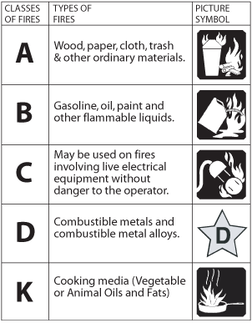 He is only 42 years old.... On a recent home inspection I found this relic. Relic being a retaliative term as the item in question was born around the same time some of us were introduced to the world. ;-) The poor fella was born in 1979 and has lost its charge. If the extinguisher were a person you might say, "You have a lot of life left." "You have so much more to offer." Well the sad truth for this guy is that retirement is long past. He should have hung it up and started walking laps around the mall in 1990. How long are they good for? According to National Fire Protection Association (NFPA) standards, disposable fire extinguishers must be replaced every 12 years.A disposable fire extinguisher has a plastic head, and a gauge that reads Full / Empty. www.kiddie.com Arm yourself with the right tool for the job: Combination ABC Fire Extinguishers are most commonly found in homes. Where should I put them? As part of my normal inspection I recommend fire extinguishers be mounted or located in the following areas: In an easy to access cabinet in the kitchen. In an easy to access location in the garage. In easy to access locations on each floor of the home. Everyone wants to be a fire fighter: Everyone should know how to operate a fire extinguisher. I remember learning how in elementary school. The Colorado Springs Fire Department has an easy to remember set of instructions. They would probably even show your family how it you asked. Remember to P.A.S.S. *Pull *Aim *Squeeze *Sweep ProTip - Taking 10 minutes right now to locate your fire extinguishers to check the charge and expiration date and make sure that your loved ones know how to use them can save lives and property loss. More information can be found at coloradosprings.gov/fire-department/page/fire-extinguishers. https://coloradosprings.gov/sites/default/files/extinguisher_infographic_final_lowres.pdf |
Mountain View Home Inspections LLC - "Every Home Deserves a Mountain View" - Certified Master Home Inspectors serving El Paso, Teller, Park, Douglas, Pueblo and Fremont Counties.
Telephone970-361-0477
|
ServicesHome Inspections, Radon Testing, Sewer Scope Inspections, Well Pump Testing
|

